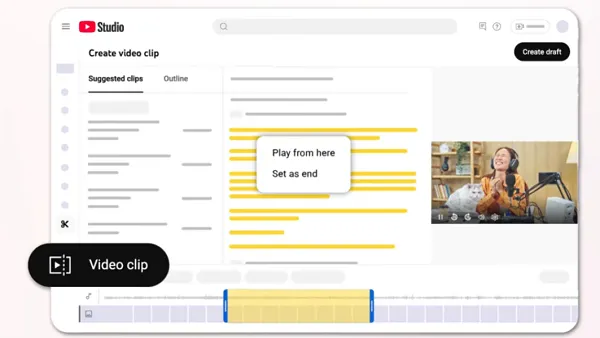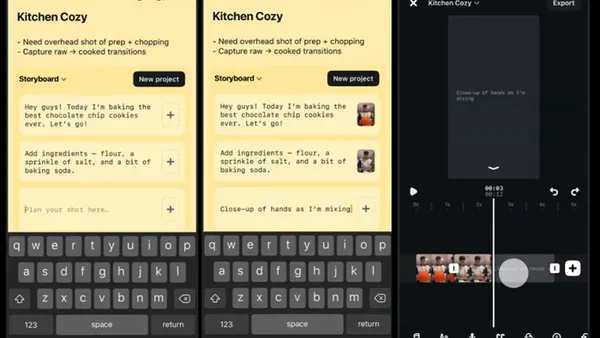 "Content," as we create and distribute it today, has come to mean "published information."
"Content," as we create and distribute it today, has come to mean "published information."
The problem with this is that it implies a passive, one-way experience. We create content, distribute it, and the customer takes it in. Maybe it's video, or a Webinar or a podcast, but really this kind of content strategy is a 21st century form of broadcasting. Content is created by a brand and delivered---albeit on demand--to a customer who consumes it.
Well, I beg to differ. And so apparently does Rachel Lovinger, content strategist at Razorfish, who in 2007 wrote the seminal article "Content Strategy: The Philosophy of Data," for the site Boxes and Arrows, in which she said:
"The main goal of content strategy is to use words and data to create unambiguous content that supports meaningful, interactive experiences."
The key part of that sentence to me is the last five words: "supports meaningful, interactive experiences."
We need to stop thinking of content as informational stuff we make for customers to digest so they like us more.
Content is a key element of customer experience. It may well be one-way to begin with-a white paper, a podcast, and so on-that people read or listen to. But in all its glory content should serve as a primary, integrated element of interactive experiences.
Think for a minute about the concept of "content as a service." By this I mean interactive services that use content as a central component of the customer experience. This is how content really works online, today.
If the Google Maps app on my iPhone tells me where the nearest sushi restaurant is, that's a form of content as a service. I ask, it tells me, and I can ask again if I want something more. Maybe it's more reviews, maybe it's a map of the 10 closest sushi restaurants with their names, or maybe it's directions from here to there.
Now consider a B2B context---let's suppose we're in the market to buy new financial software for our small business. Do we buy a copy of some software package, or do we pay for software-as-a-service online? Do we go with a big brand name like Quicken or Microsoft, or do we get a specialty package for our industry?
We begin researching these issues through a range of strategies. Some of them start by Googling different terms-maybe we'll visit CNet or American Express' OPEN Forum and see if they have recommendation. Perhaps eConsultancy or Forrester have buyer's guides we can purchase.
All of this information we find is clearly content-it was written and produced by people and delivered on to the Internet so people like us could find this content and consume it. But very quickly both we and potential vendors want to get interactive. We want to get specific information (and wow, do they want to talk to us!) Hey, is there's an interactive evaluation guide out there that will allow me to put in my needs and then recommend 3-4 top financial packages best for our business?
So one interactive characteristic of content strategy is that it should create content as part of interactive services. It's not enough to publish the right content. We need to deliver it in the right context, and in a click-stream of interactions back and forth with customers. Content strategy is a kind of service design and should use all of the interactive power of digital customer experience.
A second interactive characteristic of content is that it is inserted into the traffic through social networks, including online networks like Twitter and LinkedIn, but also through older online social applications like e-mail. If you're my friend and you know about financial applications, I might send you an e-mail asking if you can recommend any good ones. You might send me a link back to one you like, or to an article about SMB financial applications that compares the best of them. That's a social interaction with content.
These social interactions are also very influential with search engines, since they constitute a kind of endorsement by you when you send me the link. That counts in search engine rankings. (And now that Google has Google+ it counts even more.)
One of my favorite content pieces was created by Bob Taylor of Taylor Guitars after musician Dave Carroll wrote his scathing parody song "United Breaks Guitars," when that airline trashed his axe en route. Taylor created a short, clear video about how to fly with your guitar so it doesn't get damaged:
He also announced that going forward the Taylor service center would open up to take in any guitar of any make that is damaged in flight.
So far he's gotten 600,000 views of the video. Clear, credible content in context will be spread socially. Authenticity, transparency of motive, and real value are the three key filters we use to judge content we find or chose to pass along socially.
A third interactive characteristic of content is that interactions take place both online and offline. I may print out a coupon at the end of an article and take it into a local store to buy a product. If I'm buying financial software and I visit enough sites it won't be long before a salesperson will call me, or at least try to chat me up online. That leads to in-person visits.
We tend to put these offline interactions out of mind when we think about content and content strategy, but content from a brand or an institution has to be truly cohesive to make sense to a customer. Building content in silos is never a good idea, no matter how easy it makes the task of content design and production. Service designers should always look at customer journeys from wherever sparks first begin to fly to wherever they lead-online and offline.
Big data strategy is one idea companies are turning to for this kind of massive, nuanced, integrated understanding of customers. This does lead to constant struggle with creepiness, such as Target's recently exposed search for pregnant women online. If there is a way to know that a woman is pregnant, Target places a huge premium on getting in front of her with all sorts of baby products because they'll get the jump on all of their competitors.
But before we look at the meta-challenge of integrating all aspects of the user experience, its useful just to consider content-and content strategy-as a primary component of social service design.
Servicedesignbooks.org maintains a terrific list of the best books on service design, including my personal favorite, "Change By Design," by Tim Brown.
"Social service design" is three words, each steeped with meaning. We're creating services, and these services exist in online and offline worlds of peer-to-peer social communication and community.
Perhaps most of all, they require the practice of intentional design, above and beyond thinking about how to create what content to support them.
Rohn Jay Miller is a Partner in Content & Social, a consultancy based in Minneapolis and San Francisco. He can be reached at [email protected]












